20 Content Marketing Trends To Leverage In Your Content Strategy (2022 Edition)

Table of Contents
- 20 Content Marketing Trends to Leverage in Your Content Strategy in 2022
- Key Takeaways
- Conclusion
- FAQs
As of 2020, over 3.6 billion users use social media and other online channels. The Gen-Z and millennial population seem to be spending maximum time online, approximately 3 hours daily. This makes digital marketing an additional avenue and a must-have in the modern marketing arsenal. Search engine optimization (SEO) and content marketing trends play a crucial role in growing revenue in the digital landscape.
The statement, ‘Content is King’, has been used repeatedly for the past couple of years. But is content still really the differentiator for your marketing activities these days? We have seen marketing go through a sea change, from being offline to being almost wholly digital. Traditional marketing channels like TV, billboards, radio, and print media are simply not enough anymore to reach out to one’s target audience. It is essential to be abreast of the latest content marketing trends to create content with time and trends.
As of 2020, over 3.6 billion users are using social media and other online channels, according to Statista. The Gen-Z and millennial population seem to be spending maximum time online, approximately 3 hours daily. This makes digital marketing an additional avenue and a must-have in the modern marketing arsenal. Over the last few years, the evolution of content marketing trends has been phenomenal.
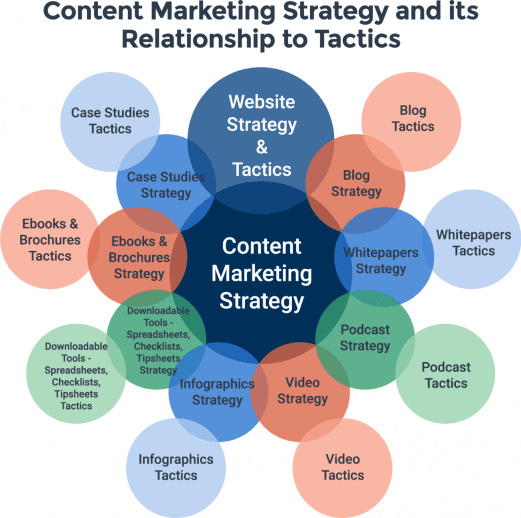
While we have seen digital and content marketing becoming a necessity over the years, it was only during the pandemic that businesses seemed to embrace the digital revolution truly. Marketers assumed expected growth of 66% in social media content creation during the pandemic. This was followed by blog content and video production at 57% and 50%, respectively.
20 Content Marketing Trends to Leverage in Your Content Strategy in 2022
With many companies now leveraging online platforms, the competition in the digital realm has increased significantly. There is no better time to leverage SEO and content marketing trends to grow business revenue. In this competitive world, content marketing will indeed prove to be the real differentiator. As famous marketer Seth Godin once said, “Content marketing is the only marketing left.” And his words could not have been more accurate.
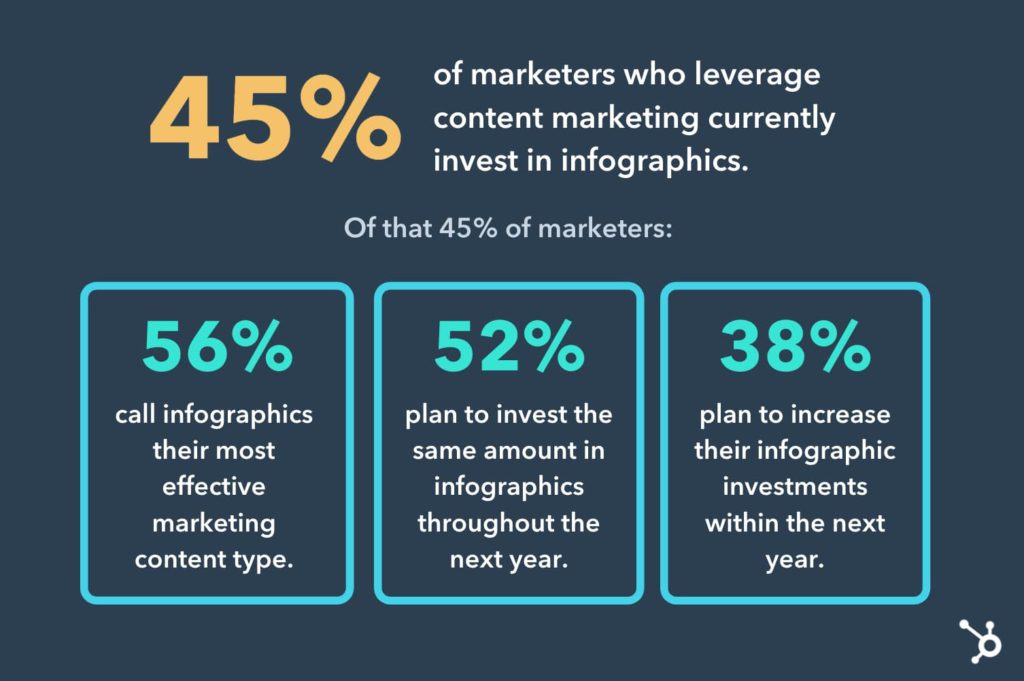
What is content marketing? It is an authentic and helpful process that creates an impact on audiences. It isn’t just a standalone activity; it acts as the starting point for every other digital marketing approach.
So, what are the key things brands should consider while drawing up their content marketing strategies for 2022? With organizations consistently invested in and improving their digital strategy, we need to keep an eye on some of the latest content marketing trends in 2022.
1. Focus on your niche and use long-tail keywords
Recently, we have seen the increasing popularity of content focused on a particular niche. And marketers are using lengthy guides or long-form content for their audience. The internet is filled with innumerable articles, videos, or posts on any given topic. In this era of information overload, long-form content can help you position yourself as a thought leader and an authority on a particular subject. The most significant content marketing trend to leverage for long-form blog content is search engine optimization (SEO), the practice of including popular search phrases, i.e., keywords, in your content.
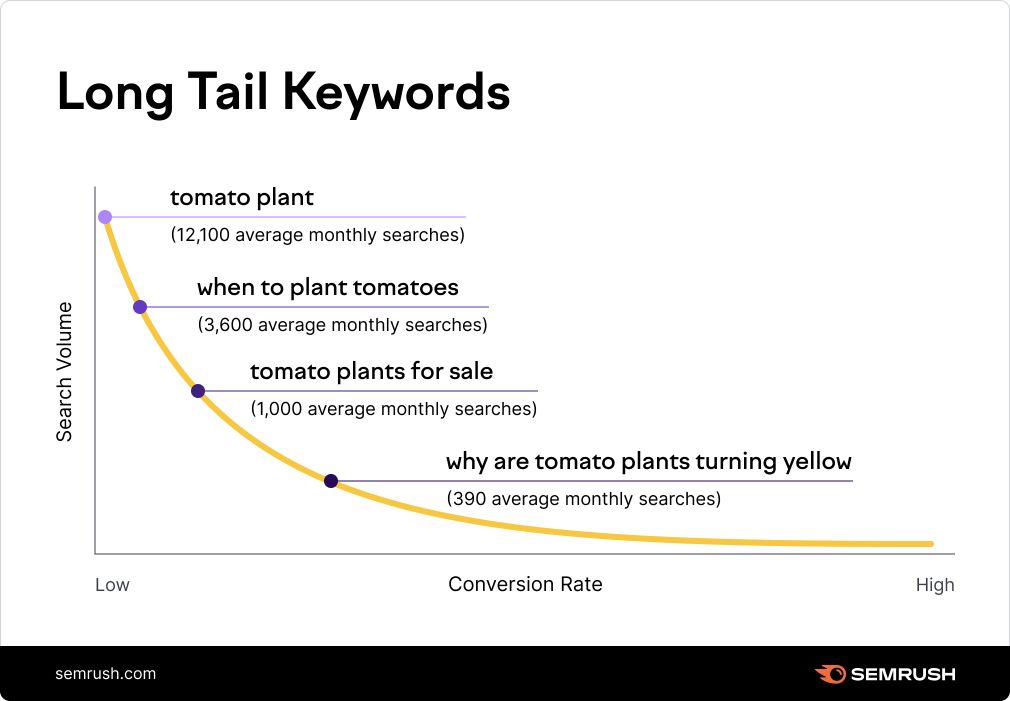
Furthermore, you can use long-tail keywords, another content marketing trend, to help your content stand out from the crowd. These key words ensure that the content is showcased to a targeted and specific user. This makes it easier to rank your content and increase organic traffic, which is good news, primarily if you target a competitive space. For finding long-tail keywords, you can leverage tools like:
You can also use Google’s features like:
- People Also Searched For feature
- Google Suggest
2. Build content communities
Since the pandemic broke out, one content marketing trend that has emerged is the push for building communities for marketing teams. The number of slack communities has grown 2.5 times since 2016. Community marketing is not just about selling a brand or raising awareness; it has more to do with engaging customers to build trust and loyalty. A community provides opportunities for users to collaborate, learn, and network, which helps you build a strong brand.
An example of building a community that is helpful and offers support is the ProBlogger Community page. It provides seasoned bloggers and new entrants with an option to learn, collaborate and get discounts, enabling them to grow and make optimum use of the brand’s website.
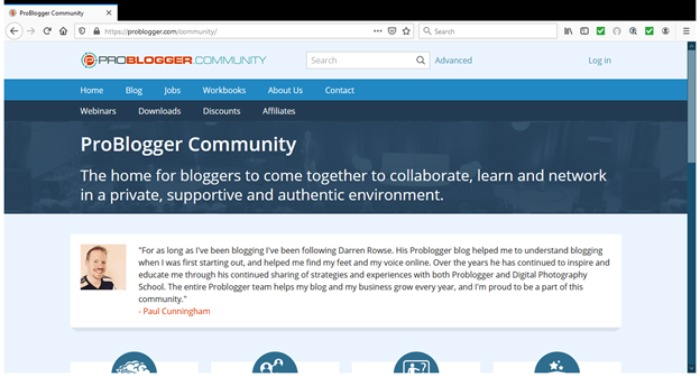
3. Bring in expertise and industry focus
Content marketing is no longer just about creating content to increase page ranking or showcase a strong presence. One content marketing trend to leverage for customers to trust your brand is to showcase industry knowledge and expertise. Readers and customers are more likely to trust a particular piece of content if an industry expert writes it. According to Nielsen, 85% of customers regularly look for expert-backed content before purchasing.
Start by creating author bios for your content or get experts onboard for panel discussions, webinars, or videos. It can also help if you collaborate with influencers in your field. Doing this will add to your content’s trustworthiness and help you stand out as a knowledgeable brand and an expert in your chosen niche.
An example of a good author profile is concise and impactful. It has a high-quality image written in the third person and adds value to the blog content.
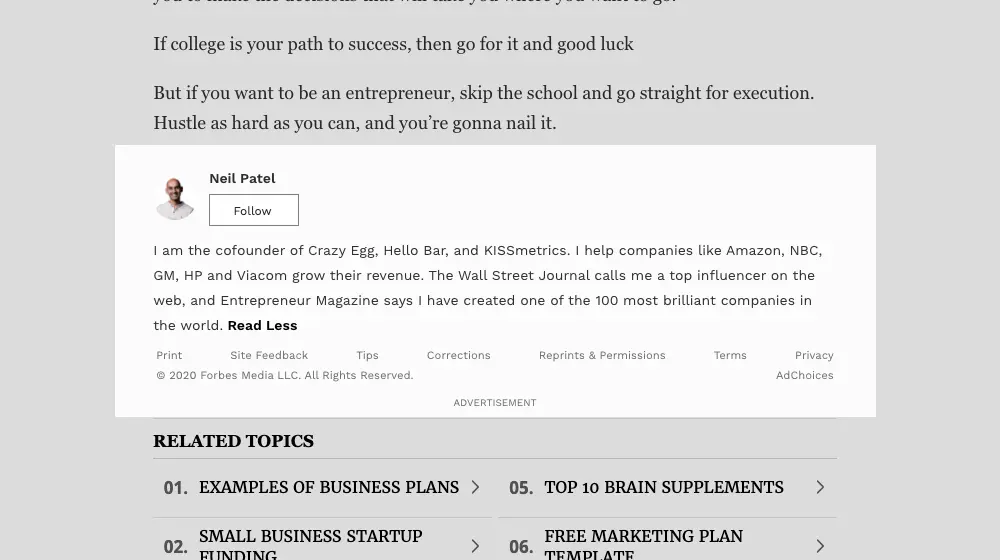
4. Personalize your content
Hyper-personalizing content specific to a particular demographic has always been a crucial content marketing trend to leverage in the business. Nowadays, a customer doesn’t have the patience or the time to search extensively for what they want to look up. Therefore, content marketing needs to be more personalized and targeted.
Moreover, brands should be sharing appropriate content and communications with their customers/prospects. The Salesforce State of Connected Customer Report 2019 findings suggest that 73% of customers expect some kind of communication from the brand that caters to their needs.
To start with personalization, it is suggested that you determine a target persona and a stage of your customer journey. Next, think of ways to engage with each persona at their appropriate stage. For example, a customer at the awareness stage should ideally be sent introductory emails or links to a particular landing page. An interested customer should be provided with detailed information about a product or a service. Emails on discounts or offers should also be sent to improve the conversion rate.
Another content marketing trend to leverage in 2022 is incorporating storytelling in your content. Relatable stories and humorous anecdotes foster engagement. User-generated content could drive high engagement from consumers. When you tell their stories, their voices are heard, and it establishes a bond of trust between the brand and the user.
5. Create headlines with emotional keywords
Another SEO and content marketing trend to truly supercharge your content is to create headlines that grab attention and compel user action. Using emotional keywords will increase your content’s appeal and the level of interaction on all your channels. You can use Google Keyword Planner to help you with the right keywords in your content.
For example, if your keyword is ‘improve content marketing,’ some headline options could be:
- 3 Steps To Improve Content Marketing In 2022
- 7 Powerful Ways To Improve Content Marketing
- Easy Tips To Improve Content Marketing For Beginners
Tip: You may also use Peppertype.ai, Hubspot Blog Topic Generator, or Portent Idea Generator for getting suggestions for your headlines.
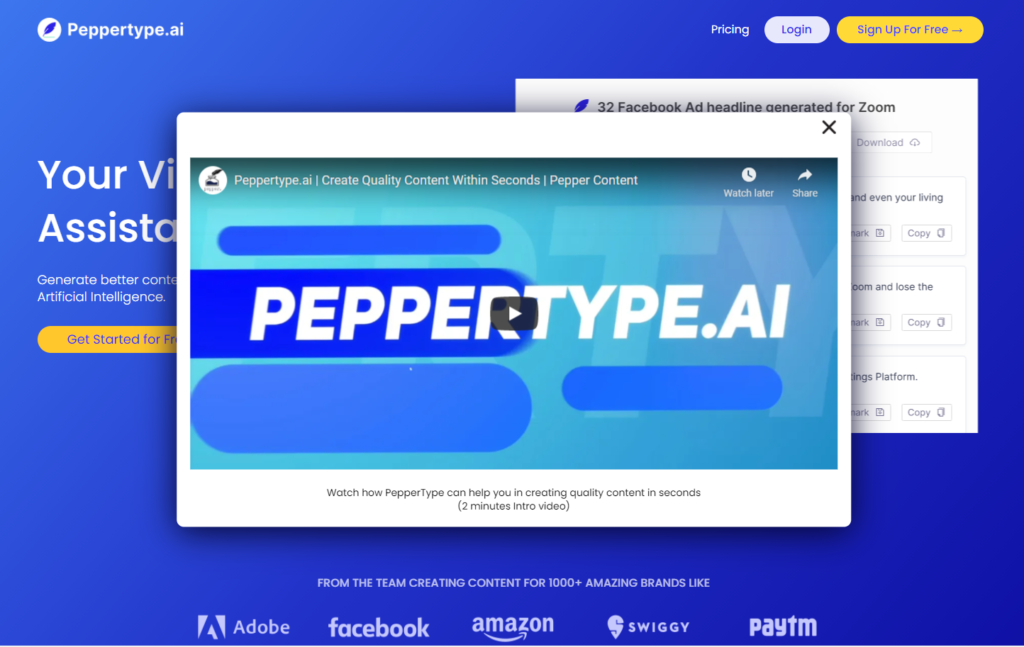
6. Explore Google’s Discover feature
Artificial Intelligence (AI) and machine learning are improving suggested content that your customers are likely to see. So why not use some of these features yourself? Google Discover combines news, videos, and other content to fill the feed, and this is based on user interactions and search history.
This feature is available on Google’s mobile pages and when users open new tabs in the Chrome browser. For your content to be eligible on Discover, you need to meet its guidelines and create unique and engaging content. You can explore the Google Discover guidelines and improve your chances of appearing in the feed.
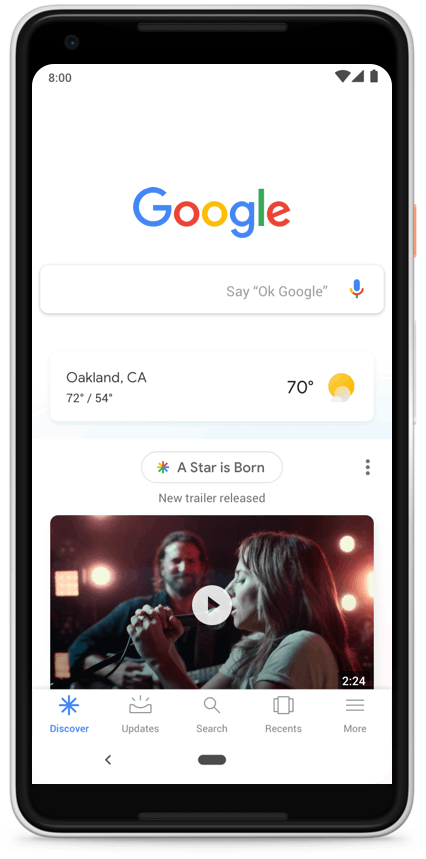
7. ‘Story’ content sells
Short-form, vanishing content is the latest content marketing trend that has recently gained popularity. Today, almost every social media platform has a ‘Story’ feature to enable users to add short videos or image-heavy content that disappears after 24 hours. The popularity of ‘Stories’ started with Snapchat and is now used by Instagram, Facebook, WhatsApp, and Twitter (called Fleets). Stories are the most viewed content on these platforms, with Instagram Stories being viewed by 500 million users, with 1/3rd of the stories considered being shared by business accounts, according to Statista.
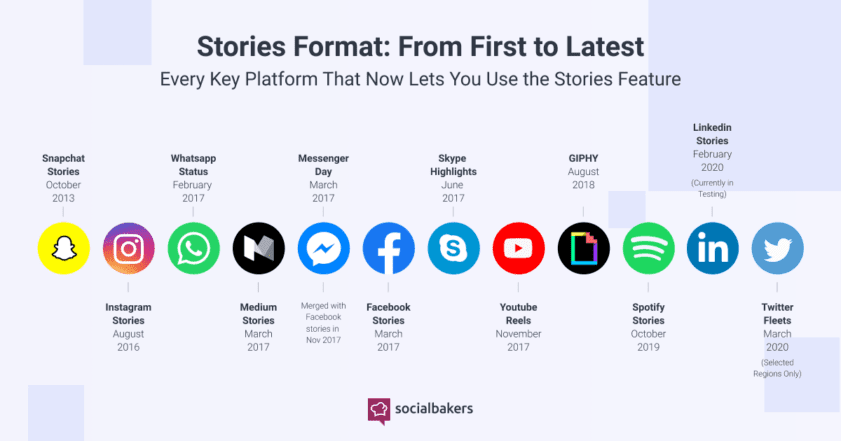
To create stories, simply use breathtaking visuals or videos to appeal to your target audience. Some other tips could include:
- Using engaging content formats such as polls, questions, or fun stickers
- Adding music or sound for added appeal.
- Using the Instagram effects for added appeal while ensuring the effects do not focus on your key message.
You can further improve interactions by taking a user to your blog, website, or social media post on any topic.
8. Webinars are still relevant
In 2020, webinars were a rage as people utilized their time indoors to learn about new concepts or topics that interested them. As we move on this year, video content and webinars will still play a prominent role in enabling organizations to connect with their audience effectively. And no, it is not going away any time soon! In 2022, webinars will continue to be one of the most educative content marketing trends to leverage in the business.
After a few initial hiccups, most companies have mastered the art of refining their webinars to be engaging, simple, and of just the right length. According to industry experts, webinar formats are changing to adopt more engaging discussions like fireside chat, masterclass sessions, or one-on-one interview formats. This is because people don’t just want to sit through a 30+ slide webinar; they want the webinar to be interactive. Brands can also explore going live on YouTube, Facebook, Instagram, or other social platforms which appeal to the younger audience.
9. Video content is viral
Video content marketing has grown significantly over the past few years. With improved WiFi speeds and the ease of creating video content, many marketers believe such a type of content gives substantial ROI compared to plain text content. According to Wyzowl’s 2020 State of Video Marketing:
- 96% of respondents claim to have watched an explainer video to learn about a product or a service.
- 84% of respondents think a brand’s video convinced them to buy a particular product or a service.
- 86% of respondents want to see more video content from a brand.
Moreover, many customers are now likely to scour the internet before buying a particular product or service, and 70% of B2B buyers watch a video during the buying process.
It is better to start small and leverage existing content by converting it to video formats. A brand can build on it and move on to make more videos on a range of topics as time progresses.
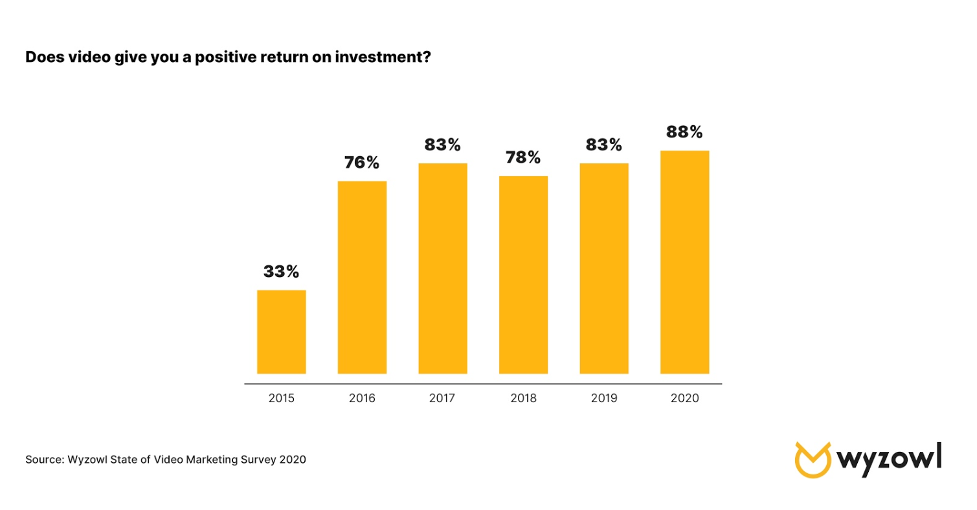
Another content marketing trend to leverage in 2022 is to include captions or subtitles in videos. Silent videos have been increasingly popular because most users watch videos without sound. Including captions and subtitles are also more inclusive as it caters to the needs of differently-abled audiences.

10. Optimize content by focusing on E-A-T
In 2020, Google updated its search algorithm, which got the entire marketing community talking. To ensure that results shown on its platform are relevant to users, Google has described three key factors that will now be considered when ranking pages. The factors are:
- Expertise: Refers to the main content on a website. The algorithm will look for ways to understand if a particular website is an expert on a specific topic or has the credentials to back the information being provided.
- Authoritativeness: This refers to the creator of the main content and will check if the creator has a strong background and is looked at as a leader in the industry.
- Trustworthiness refers to how trustworthy the content or its creator or website is for a user.

To help your content meet the E-A-T principles above, brands can leverage the following content marketing trends:
- Link-building for their pages from credible websites
- Including a bio and credentials of the author on your blog or other content improves trustworthiness.
- Linking out to other authoritative sources for supporting the stats and data that you have used in your content
- Keeping your site updated regularly with fresh and relevant information
11. Optimize content for voice search
The popularity of home automation and intelligent speakers has led to a rise in voice search. Comscore predicts that 50% of all searches will be voice searches in 2022, and brands will need to optimize their content for voice search to be ranked at the top.
This brings in the element of complete sentences instead of keyword-based searches. For example, a user is more likely to type ‘2022 content marketing trends’ to get the results for the critical content trends this year, but a voice query is more likely to be something like, “Which are the top content marketing trends in 2022?” The results need to be optimized, as Google will pick up results with compelling headlines and snippets for its voice search results.
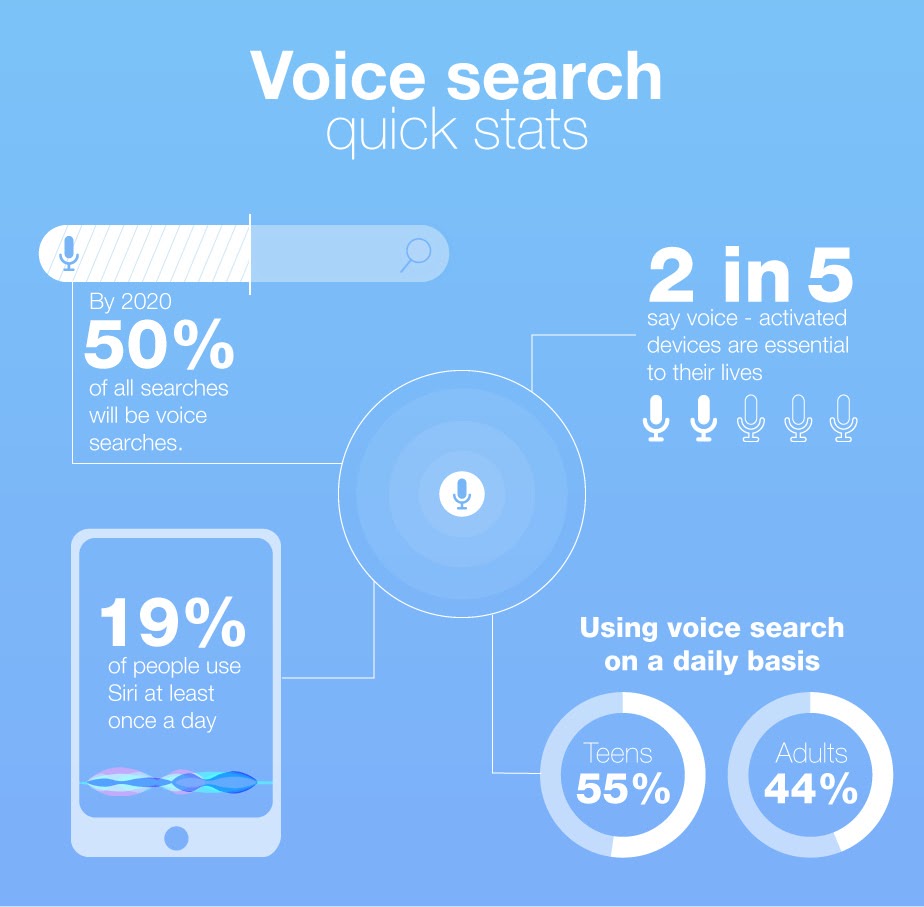
12. Focus on intent to rank higher in semantic search
Semantic search redefines the way search algorithms work, and the use of AI and data to determine the purpose and contextual meaning behind a search query enables relevant results to be on top. So, the most important content marketing trend in 2022 would be to optimize content to be relevant and helpful. To create intent-based content, brands can:
- Write content in an easy-to-understand language, and not just add keywords to rank higher, and should also ensure that they serve a purpose
- Break content into subheads and bullets to aid readability
- Use a review, Q&A, FAQ, article, or rating schema to make the content more appealing and easy for web crawlers
- Create content that answers a user’s pressing concern
13. Repurpose content across channels
Is a blog written a few years back still engaging and relevant to your audience? If you have great content that can still be used, content repurposing is the way ahead for your marketing strategy. Repurposing is simply the art of repackaging the content into different formats. For example:
- Can the blog or a particular set of blogs be turned into an e-book or a whitepaper?
- Can content for a particular page be used for targeted campaigns on the subject?
- Can your posts be used to create infographics with research and stats?
- Can your webinar topic be transcribed into a blog, a podcast, or an email campaign?
There are several ways to repurpose content and help you take the burden off content writers who frequently need to produce fresh pieces.
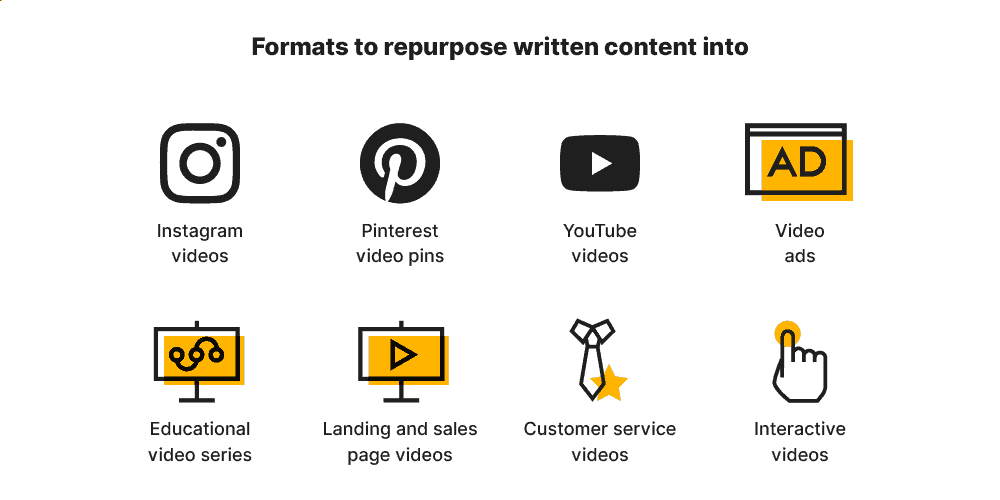
14. A/B Testing will become a waste of time and budget
A/B testing is a well-known method to validate the right kind of creative content that appeals to audiences. But with AI and better predictions, many think that A/B testing will become obsolete in the years to come.
According to RJ Taylor, CEO & Founder of Pattern89, “Once machine learning predicts the trends before they happen and provides clear guidance for marketers, why waste money to A/B test something that wouldn’t work as well? Soon, marketers will be able to go all-in on what will work best without having to test the theory.”
15. Cross-channel content will grow
Multi-channel content marketing has become a powerful content marketing strategy. Content marketing trends in the future will evolve to incorporate multiple channels and need a versatile approach. For example, your content created for social media can also be leveraged for SMS or WhatsApp messages to a particular target audience.
Depending on user behavior and the channels your brand wants to focus on, cross-promotion and content integration on more than one channel are likely to trigger a personalized and behavior-driven marketing approach.
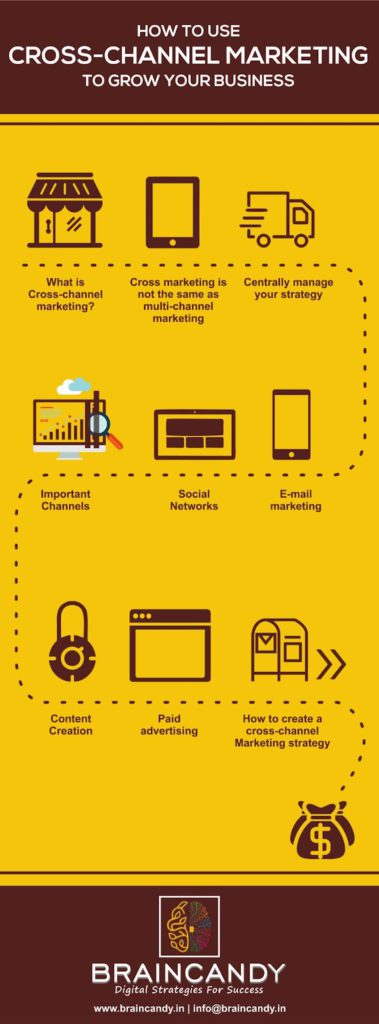
16. The older generation prefers reading to watching videos
Although videos and visual content are the latest content marketing trends, a large demographic still prefer textual content in 2022.
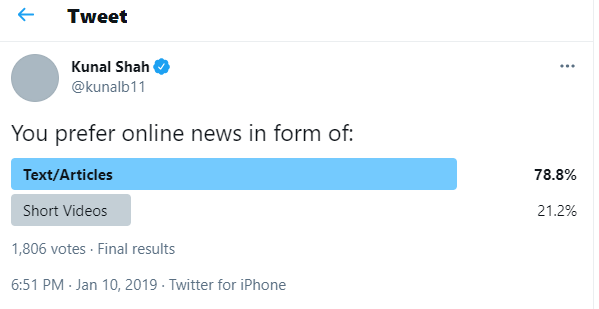
A Twitter poll run by Kunal Shah, Founder of CRED and Freecharge, found that surprisingly, people still expect content to be textual and not just visual. This also has a lot to do with the demographic and the type of audience you are targeting.
Although videos are a hit for B2C, B2B buyers prefer reading the entire content via a brochure, whitepaper, or a detailed blog on the subject. The older generation is used to reading and likes content pieces to be in PDF formats to be downloaded and read at leisure.
So, when creating a content marketing plan, make sure that you factor in your audience and the type of content format they find engaging.
17. Prioritize user-generated content
‘People’ stories usually get viral and help in humanizing a brand. While branded content provides an industry perspective, user-generated content is an excellent way of assisting users in understanding what other customers or audiences are thinking. In addition to case studies, brands can build content-leveraging testimonials and interactive videos amongst other channels to get their customers talking about your product or service.

18. AI will play a bigger role in content marketing
If you wonder whether AI will replace human writers, the answer is not anytime soon. But does that mean AI is completely irrelevant in the content marketing game? Definitely not. It is one of the most critical emerging technologies in content marketing.
AI is making great strides in content marketing and even enabling content creators to generate ideas, curate content, and provide insights into the popular content among its target audience.
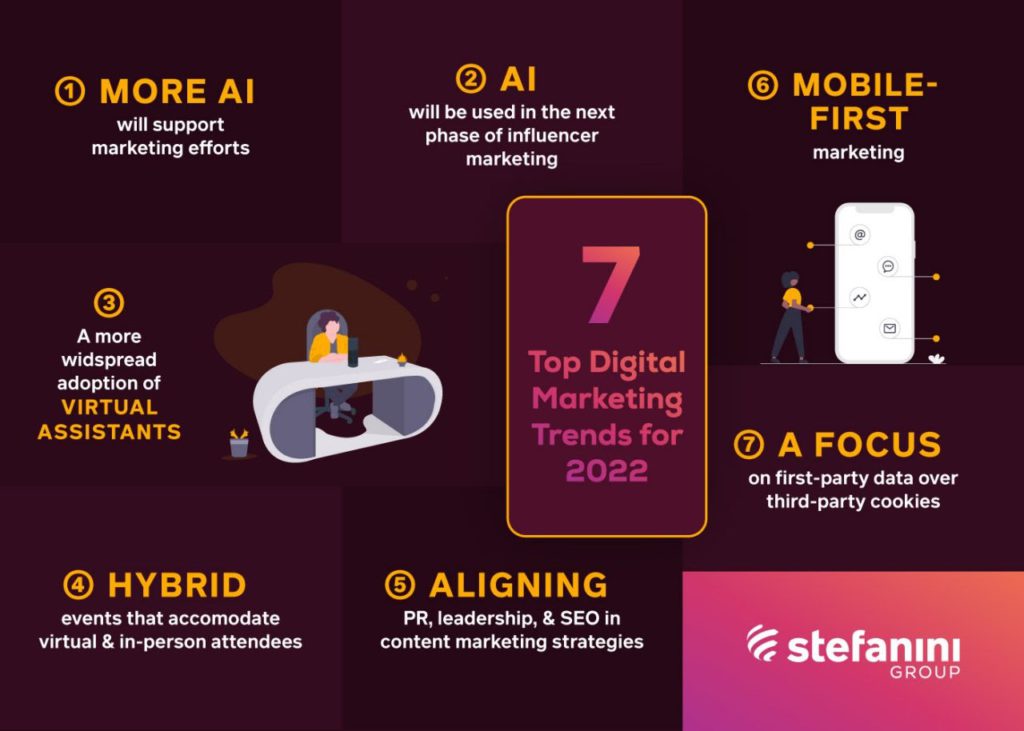
In 2022, AI will play a more significant role in enabling marketers to understand which content is working best. Although it will still need humans to validate whether it is moving in the right direction, the great strides will define the future of content marketing.
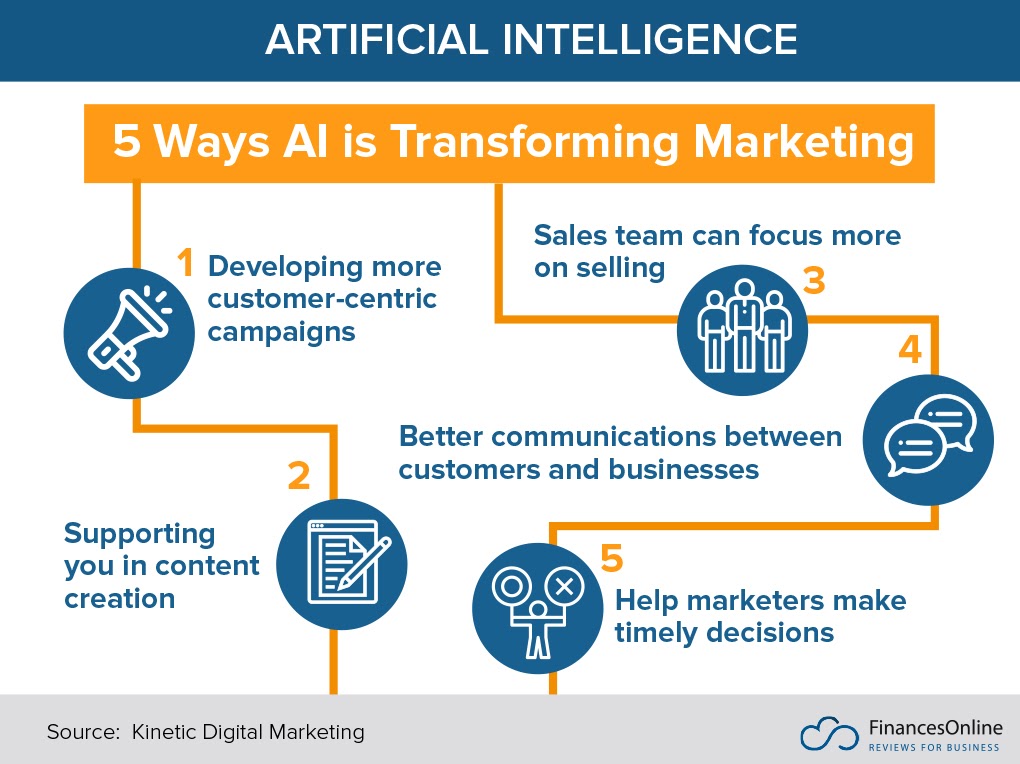
19. Interactive content will create greater engagement
Content isn’t just about context and relevance; UI and UX now play a prominent role in enabling content to be interactive and fun. Content need not be in the same read-and-consume format. The latest content marketing trends are interactive formats like quizzes, GIFs, infographics, or interactive web pages.
According to BuzzFeed, 96% of its readers finish a quiz that they participate in, making it highly engaging and effective. Such content is not just more likely to engage the audience, but it is also more likely to be shared with others.
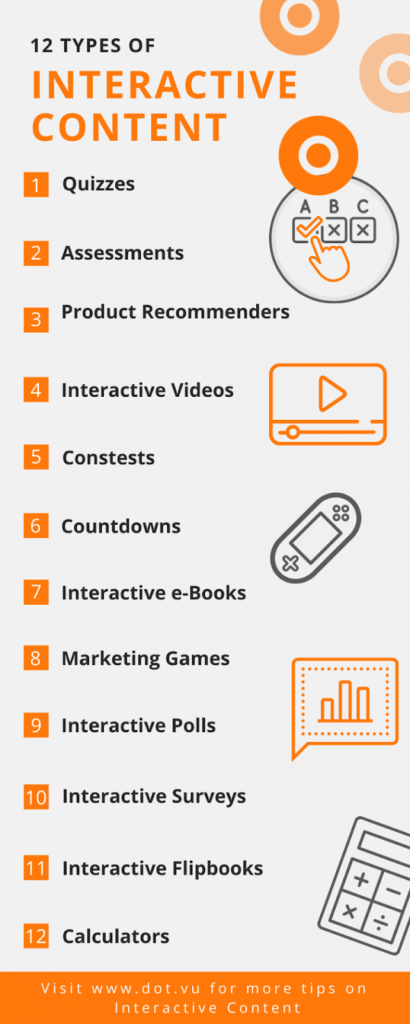
20. Value-driven content will rise to the top
An important content marketing trend nowadays is to create value-driven content. Many marketers find ways to compel users to share their email ids and other information to provide insightful content, with the web page or the landing page acting only as an entry point. This technique will become obsolete in the coming years, as an increasing number of readers will want to get value from their content and then interact with a brand.
Offer practical suggestions in your content and focus on your customers’ needs rather than just trying to sell your product. In an age when most of your audiences work remotely, value-driven content will matter as users now heavily rely on online means to get answers to their doubts.
Key Takeaways
- Search engine optimization (SEO) continues to be a dominant force in content marketing. Long-tail keywords would be crucial for SEO and content marketing trends in 2022.
- In a hyper digitalized world, where the pandemic increased the distance between people, the latest content marketing trends have been rightfully focusing on creating content communities. If your brand can bring people together, it will stay relevant.
- Another content marketing trend that would be in vogue in 2022 is hyper-personalized, targeted, and meaningful content.
- Content marketing trends like evoking emotions with headlines, incorporating customer stories in content, and pushing for user-generated content would continue to dominate charts in 2022.
- Artificial intelligence and machine learning would help users generate content ideas and achieve goals faster in 2022.
- The most significant content marketing trend to leverage in 2022 is video content marketing. Videos, static infographics, and high-resolution images are crucial in driving blog traffic.
- You must ensure that your content is built from expertise to leverage SEO and content marketing trends in 2022. Sub-standard, quality content with watery keyword consistency would have no place in 2022.
- Ensure that your blogs are interactive and engaging to leverage SEO and content marketing trends in 2022.
Conclusion
SEO and content marketing trends are constantly evolving. The above list is just the tip of the iceberg for content marketing. With increasing demand and competition, you have to leverage newer SEO and content marketing trends in the digital space. In 2022, marketing will be all about the impact and the ability of a brand to connect with its audience. Stay focused on what you do best, create value from your content, and do not forget to optimize and improve. Content communities have emerged as the most significant content marketing trend since the pandemic hit the world. It will continue to dominate charts even in 2022. If your brand content can bring people together, it is guaranteed to be relevant for years to come.
FAQs
In an ever-evolving digital landscape, content marketing trends come and go. Search engine optimization (SEO) is probably an evergreen content marketing trend. Video content has been dominating charts for quite a few years. Some content marketing trends that have been very popular in 2022 include:
Repurposing content
Personalizing content
Using interactive content
Using user-generated content
Optimizing content for voice search
Although SEO and content marketing trends are constantly evolving, high-quality, creating well-researched and meaningful content is the only way to stay relevant in 2022. Creating quality content is all about understanding and following the Content Funnel, which involves three important stages:
Awareness: This stage is about understanding your target audience and their content consumption trends. Use images, videos, blogs, etc.
Consideration: Establish trust via sharing stories of clients who have used your product.
Conversion: This stage is about retaining customers through webinars, help videos, newsletters, etc.
In 2022, digital marketing will evolve and allow marketers to make better conversions, create personalized content, and analyze results. Automation will be a game-changer and the way to go for effective digital marketing. Artificial intelligence and machine learning would be leveraged as excellent content idea generators. Apart from video marketing and leveraging user-generated content, content communities are the latest content marketing trend on the block.
It is not always possible to keep track of every aspect of content marketing. Luckily, there are a plethora of tools available in the market to run a successful content marketing campaign. These include:
Google Adwords
Google Analytics
MailChimp
BuzzSumo
MeetEdgar
Search engine optimization (SEO) means including keywords or popular search phrases in the content. It boosts the chances of ranking on search engines. Some engaging SEO and content marketing trends in 2022 include:
User search intent taking a vital place
Leveraging visuals and video content
Using artificial intelligence for SEO
Core Web Vitals to increase the importance of page experience metrics
All SEO will be mobile SEO
Latest Blogs
Learn how to rank on AI search engines like ChatGPT, Perplexity, and Gemini by optimizing your content for authority, structure, and relevance. Stay ahead in AI-driven search with this strategic guide.
Explore the best healthcare SEO services for your medical practice. Improve online visibility and effectively reach more patients in need of your services.
Discover top social media agencies specializing in banking solutions, enhancing financial services and driving engagement.
Get your hands on the latest news!
Similar Posts

Content Marketing
4 mins read
11 Best B2B Content Marketing Agencies for B2B Companies in 2024

Content Marketing
5 mins read
Top ecommerce Marketing Agencies with Proven Strategies for 2024

Content Marketing
5 mins read